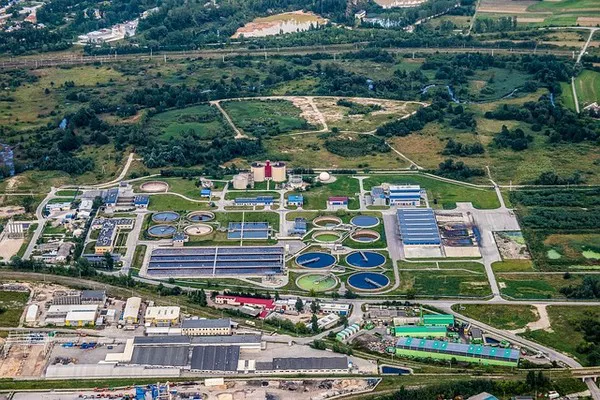As urbanization and industrialization continue to accelerate, the need for effective wastewater management becomes increasingly critical. Wastewater treatment plants (WWTPs) play a vital role in ensuring that water resources remain clean and safe for both human use and environmental sustainability. This article delves into the intricate workings of wastewater treatment plants, exploring their processes, technologies, and importance in modern society.
What is a Wastewater Treatment Plant?
A wastewater treatment plant is a facility designed to treat and purify water that has been contaminated by domestic, industrial, and commercial activities before it is released back into the environment. The primary objective of these plants is to remove pollutants and harmful substances from wastewater, making it safe for discharge into natural water bodies or for reuse in various applications.
The Necessity of Wastewater Treatment
Untreated wastewater contains a plethora of contaminants, including organic matter, pathogens, chemicals, and heavy metals, which can pose significant risks to public health and the environment. If released without treatment, this polluted water can contaminate drinking water sources, harm aquatic ecosystems, and spread waterborne diseases. Hence, wastewater treatment plants are essential for mitigating these risks and preserving water quality.
Stages of Wastewater Treatment
Wastewater treatment typically involves multiple stages, each designed to progressively remove contaminants and improve water quality. The primary, secondary, and tertiary treatment stages are the most common in modern WWTPs.
Primary Treatment
The primary treatment stage focuses on the physical removal of large particles and solids from the wastewater. This is usually achieved through screening and sedimentation.
Screening: Large debris such as sticks, rags, and plastics are removed using screens and grids.
Sedimentation: The wastewater is then allowed to sit in large tanks where heavier solids settle to the bottom as sludge, and lighter materials such as oil and grease float to the surface and are skimmed off.
Secondary Treatment
Secondary treatment is a biological process aimed at decomposing dissolved and suspended organic matter. This stage relies on microorganisms to break down the contaminants.
Activated Sludge Process: One common method is the activated sludge process, where wastewater is mixed with a small amount of sludge rich in bacteria and aerated to promote microbial growth.
Trickling Filters: Another method involves trickling wastewater over a bed of rocks or other material coated with biofilm that breaks down organic matter as the water passes through.
Tertiary Treatment
Tertiary treatment, also known as advanced treatment, targets the removal of residual pollutants that are not eliminated during the primary and secondary stages.
Filtration: Techniques like sand filtration or membrane filtration remove remaining suspended particles.
Chemical Treatment: Chemical processes such as coagulation and flocculation are used to aggregate fine particles into larger clumps that can be easily removed.
Disinfection: Finally, disinfection methods, including chlorination, ultraviolet (UV) light, or ozone treatment, are employed to kill any remaining pathogens.
Advanced Treatment Technologies
In addition to the traditional stages of treatment, many WWTPs incorporate advanced technologies to enhance efficiency and effectiveness.
Membrane Bioreactors (MBRs): These systems combine biological treatment with membrane filtration, providing high-quality effluent by effectively removing both organic and inorganic contaminants.
Nutrient Removal: Advanced processes specifically target the removal of nutrients like nitrogen and phosphorus, which can cause eutrophication in receiving water bodies.
Energy Recovery: Innovative technologies are being developed to recover energy from wastewater, such as anaerobic digestion that produces biogas from sludge.
Environmental and Economic Benefits
Effective wastewater treatment offers numerous environmental and economic benefits. By reducing pollutant loads, WWTPs protect aquatic ecosystems and biodiversity. Clean water is essential for agriculture, industry, and recreation, thereby supporting economic activities and enhancing quality of life.
Additionally, modern WWTPs can contribute to sustainability through resource recovery. Nutrients extracted from wastewater can be used as fertilizers, and energy recovered from sludge can be harnessed to power treatment operations or fed into the grid.
Challenges and Future Directions
Despite their crucial role, wastewater treatment plants face several challenges. Aging infrastructure, population growth, and the emergence of new contaminants, such as pharmaceuticals and microplastics, require continuous innovation and investment.
Infrastructure and Investment
Many existing WWTPs were built decades ago and are now struggling to cope with increased volumes of wastewater and stricter regulatory standards. Upgrading these facilities is costly but necessary to ensure continued effectiveness.
Emerging Contaminants
Pharmaceuticals, personal care products, and microplastics are increasingly detected in wastewater and pose unknown risks to health and the environment. Developing methods to effectively remove these substances is a priority for researchers and engineers.
Climate Change
Climate change adds another layer of complexity, with extreme weather events leading to flooding and overflows at treatment plants. Building resilient systems that can adapt to changing conditions is crucial for future wastewater management.
Conclusion
Wastewater treatment plants are indispensable components of modern infrastructure, safeguarding public health and environmental integrity. By effectively removing contaminants and recovering valuable resources, these facilities not only address immediate pollution concerns but also contribute to broader sustainability goals. Continued investment in technology, infrastructure, and research is essential to meet the evolving challenges of wastewater management and ensure a cleaner, healthier future for all.

